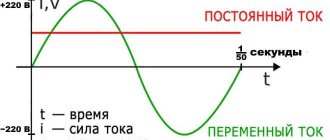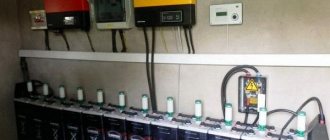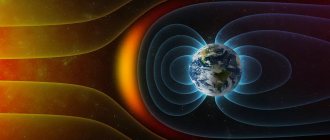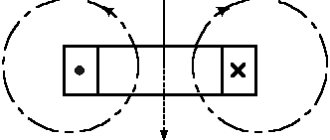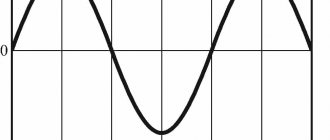Nikola Tesla was, without a doubt, one of the greatest inventors in human history.
Born in 1856 into a Serbian family, Tesla was always ahead of his time. He graduated from school a year early and did well at university, where he studied electrical engineering but did not complete his degree. Throughout his career, Tesla received approximately 300 patents from 26 different countries, most of them from the USA, Canada and the UK. While many of us know him as a futuristic inventor who played a key role in the development of alternating current along with advances in radio and motors, he also came up with some of the strangest ideas that set him apart from other inventors.
Below we've compiled a list of Tesla's inventions that still influence our lives, as well as those that never came to fruition.
Bladeless turbine
Tesla Turbine at the Nikola Tesla Museum
Patented in: 1913
In 1906, at the age of 50, Tesla demonstrated a bladeless turbine producing 200 horsepower or 149.2 kilowatts at 16,000 rpm. A bladeless turbine, as the name suggests, has no blades but consists of several smooth, tightly packed plates attached to a shaft.
The fluid is supplied from an opening that is usually located on the top edge of the turbine. In this case, the only outlet is located in the center; the liquid takes a spiral path before exiting the turbine. It creates thrust to make the discs rotate.
Although bladeless turbines have been in use since the early 1980s, they have never become popular or commercially successful. Today, such turbines are used mainly in applications where steam or compressed air is used as the energy source (for example, a turbocharger in cars).
How does direct current differ from alternating current and how is it converted?
Direct electric current is the movement of particles with a charge in a certain direction. That is, its tension or force (characterizing quantities) have the same value and direction. This is how direct current differs from alternating current. But let's consider everything in order.
The history of the appearance and “war of currents”
Direct current used to be called galvanic current due to the fact that it was discovered as a result of a galvanic reaction. Thomas Edison tried to transmit it through electrical transmission lines. At that time, there were serious disputes between scientists on this issue. They even received the name “war of currents.” The question of choice as the main one, variable or permanent, was being decided. The “fight” was won by the variable species, since the constant one incurs significant losses, transmitted over a distance. But transforming the alternating type is not difficult; this is how direct current differs from alternating current. Therefore, the latter is easy to transmit even over long distances.
Sources of direct electric current
The sources can be batteries or other devices where it occurs through a chemical reaction.
These are generators, where it is obtained as a result of electromagnetic induction, and after that it is rectified due to the collector.
Application
In various devices, direct current is used quite often. For example, many household appliances, chargers and car generators work with it. Any portable device is powered from a source that produces a constant output.
On an industrial scale, it is used in engines and batteries. And in some countries they are equipped with high-voltage power lines.
In medicine, healing procedures are carried out using direct electric current.
On the railway (for transport) both variable and constant types are used.
Alternating current
Most often, however, this is what is used. Here the average value of force and stress over a certain period is equal to zero. It constantly changes in size and direction, and at regular intervals.
To generate alternating current, generators are used in which an electromotive force is generated during electromagnetic induction. This is done using a magnet rotated in a cylinder (rotor) and a stator made in the form of a stationary core with a winding.
Alternating current is used in radio, television, telephony and many other systems due to the fact that its voltage and power can be converted with almost no loss of energy.
It is widely used in industry, as well as for lighting purposes.
It can be single-phase or multi-phase.
Alternating current, which varies according to a sinusoidal law, is single-phase. It changes over a certain period of time (period) in magnitude and direction. AC frequency is the number of cycles per second.
In the second case, the three-phase version is most widespread. This is a system of three electrical circuits that have the same frequency and emf, shifted in phase by 120 degrees. It is used to power electric motors, furnaces, and lighting fixtures.
Humanity owes many developments in the field of electricity and their practical application, as well as the impact on high-frequency alternating current, to the great scientist Nikola Tesla. Until now, not all of his works left to descendants are known.
How does direct current differ from alternating current and what is its path from source to consumer?
So, a variable is a current that can change in direction and magnitude over a certain time. The parameters that are paid attention to are frequency and voltage. In Russia, household electrical networks supply alternating current with a voltage of 220 V and a frequency of 50 Hz. The frequency of alternating current is the number of times the direction of particles of a certain charge changes per second. It turns out that at 50 Hz it changes its direction fifty times, in which direct current differs from alternating current.
Its source is the sockets to which household appliances under different voltages are connected.
Alternating current begins its movement from power stations, where there are powerful generators, from where it comes out with a voltage of 220 to 330 kV. Then it goes to transformer substations, which are located near houses, businesses and other structures.
The current entering the substation is 10 kV. There it is converted into a three-phase voltage of 380 V. Sometimes with this indicator, the current passes directly to the facilities (where powerful production is organized). But basically it is reduced to the usual 220 V in all houses.
Conversion
It is clear that in sockets we receive alternating current. But often electrical appliances require a permanent appearance. Special rectifiers are used for this purpose. The process consists of the following steps:
- connecting a bridge with four diodes having the required power;
- connecting a filter or capacitor to the bridge output;
- connecting voltage stabilizers to reduce ripple.
Conversion can occur either from alternating current to direct current or vice versa. But the latter case will be much more difficult to implement. You will need inverters, which, among other things, are not cheap.
fb.ru
Remote control boat
Tesla's radio-controlled boat
Proposed in: 1907
In 1898, during an electrical exhibition, Tesla demonstrated a (small) radio-controlled boat that he could maneuver over water. At the same time, he entertained the audience by creating the impression that the boat obeyed the voice commands of the audience. In reality, however, he controlled the boat using radio frequencies. He called this technology “telautomatics”.
For many of those present that day, it was a moment of pure magic. On the other hand, few saw it as a potential war machine. Tesla received a US patent for this on July 1, 1898.
Artificial tidal waves
As an engineer and inventor, Tesla firmly believed that science could be a great antidote to war and could be used effectively to prevent it. He spent a significant amount of time developing new and powerful weapons that could be used today if they worked.
Relying on his radio-controlled boat, Tesla began an ambitious project called Artificial Tidal Wave, which he believed would destroy enemy naval forces without firing a shot. To achieve this, Tesla proposed a wireless vessel that would direct a significant amount of explosive material under enemy ships and detonate it.
Tesla estimates that such an explosion would cause a tidal wave up to 100 feet high within 1 mile of the original source of the explosion. This kind of strong waves would have been enough to sink any large ship at that time.
During the Cold War, both the United States and the Soviet Union put Tesla's theory to the test by carrying out a series of nuclear explosions in the Pacific Ocean. Unfortunately, the results were not at all what Tesla had imagined.
Edison and Tesla
Hippolyte Pixie managed to create the first alternating current generator in 1835. It was a permanent magnet device that worked by rotating a handle. Entrepreneurs of that time were interested in DC generation and did not quite understand where the invention could be applied and why it was necessary to obtain AC.
The real competition for electrical transmission standards began in the late 1880s. years, when the struggle began between the major energy companies for dominance in the market for their own patented energy systems. It was a rivalry between the electrification concepts of two great inventors: Nikola Tesla and Thomas Edison.
Edison invented and improved many devices necessary for the first direct current generation and transmission systems. Within a short time, his company was able to open more than 200 stations in North America. The enterprise grew, and the inventor hired Nikola Tesla, a young engineer from Europe, to carry out work on improving the equipment. The new employee brought to Edison's attention revolutionary work for that time, based on variable value technologies. Tesla's ideas were rejected and the inventors went their separate ways.
George Westinghouse, on the contrary, reacted to the discoveries of the Serbian engineer with great interest and bought all Tesla's patents. After the Westinghouse enterprise, it experienced many upheavals, including those associated with Edison’s powerful propaganda companies. The finale of the struggle came when Tesla's system was chosen to cover an exhibition in Chicago. This event introduced the world to the benefits of multiphase AC generation and transmission. Since then, most electrical devices and networks have been ordered to meet the new standard. The main dates of the War of Currents were:
- 1870 - Edison created the first DC generator;
- 1878 - Edison Electric Light Co. founded in New York;
- 1882 - Edison opened the Pearl Street generating station with 5 thousand lights;
- 1883 - Tesla invented the transformer;
- 1884 - Tesla invented the AC generator;
- 1888 - Tesla demonstrates a multiphase electrical system, Westinghouse buys his patents;
- 1888 - execution by electric chair, invented by Edison as a means of propaganda campaign demonstrating the dangers of Tesla's technology.
- 1893 - Westinghouse Electric Company triumphs at the Chicago Fair.
You might be interested in: Application of an electrical transformer, its concept and types
Tesla Oscillator
Patented in: 1893
In 1893, Tesla received a patent for his steam electric generator, which he believed could replace reciprocating steam engines. It works by injecting steam into a generator and expelling it from multiple ports, which causes the piston to move up and down. This movement produces vibrations at high speed, which in turn produces electricity.
Tesla, later in his life, claimed that a version of this device caused the New York City earthquake in 1898. It was only after this incident that the oscillator was popularized as Tesla's earthquake machine.
According to Tesla, he once worked on a smaller version of a mechanical generator in his laboratory on Houston Street. The generator was only 7 inches long and two pounds at most. It was something that "you could put in your pocket."
Direct electric current - what is it?
Direct electric current is the continuous movement of electrons from a region of negative (-) to a region of positive (+) charges through a conductive material such as a metal wire. Although static discharges are spontaneous movements of charged particles from a negatively to a positively charged surface, there is no continuous movement of particles through a conductor.
To create a flow of electrons, a direct current circuit is needed. It is a source of energy (such as a battery) and a conductor that goes from the positive pole to the negative pole. Various electrical devices can be included in the circuit.
Continuous movement of electrons
Direct current is the continuous movement of electrons through a conductive material such as a metal wire. Charged particles move toward a positive (+) potential. To create the flow of electricity, an electrical circuit consisting of a DC power source and a wire is required to form a closed loop. A good example of such a circuit is a flashlight.
Although negatively charged electrons move through the wire to the positive (+) terminal of the power source, the flow of current is indicated in the opposite direction. This is the result of a failed and confusing agreement. Scientists experimenting with currents believed that electricity moves from (+) to (-), and this became generally accepted even before the discovery of electrons. In reality, negative charged particles move towards the positive pole, opposite to the direction indicated as the direction of current flow. It's confusing, but once an agreement has been made, it's hard to fix anything.
Voltage, Current and Resistance
Electricity passing through a wire or other conductor is characterized by voltage U, current I and resistance R. Voltage is potential energy. Current represents the flow of electrons in a conductor, and resistance represents the force of its friction.
A good way to think of direct electric current is as an analogy to water flowing through a hose. Voltage is the potential that builds up at one end of a wire due to an excess of negatively charged electrons. This is similar to increased water pressure in a hose. The potential causes electrons to move through the wire into a region of positive charge. This potential energy is called voltage and is measured in volts.
Direct electric current is the flow of electrons, measured in amperes. It is similar to the speed of water moving through a hose.
Ohm is a unit of measurement of electrical resistance. The atoms of the conductor are arranged so that electrons will pass through with little friction. In insulators or poor conductors, atoms offer strong resistance or prevent the movement of charged particles. This is similar to the friction of water in a hose as it passes through it.
Thus, voltage is similar to pressure, flow is similar to current, and hydraulic resistance is similar to electrical resistance.
Generating DC Current
Although static electricity can be discharged through a metal wire, it is not a source of direct current. These are batteries and generators.
Batteries use chemical reactions to create DC electricity. For example, a car battery consists of lead plates placed in a sulfuric acid solution. When the plates receive a charge from the mains or the car's alternator, they change chemically and hold a charge. This DC source can then be used to power car headlights, etc. The problem is that sulfuric acid is very caustic and dangerous.
You can make another battery yourself from a lemon. It does not require charging, but depends on the acid reaction of different metals. Copper and zinc work best. You can use copper wire or a coin. A galvanized nail can be used as another electrode. Iron will also work, but not as well. It is enough to stick a copper wire and a galvanized nail into an ordinary lemon and measure the voltage between them with a voltmeter. Some people even managed to light a flashlight using this battery.
A reliable source is a generator, which is made of wire wound between the north and south poles of a magnet.
Thus, direct electric current is the continuous movement of electrons from the negative to the positive pole of a conductor, such as a metal wire. A circuit is required for the passage of charged particles. In it, the direction of current movement is opposite to the flow of electrons. A circuit is characterized by quantities such as voltage, current and resistance. Sources of direct current are batteries and generators.
Electrical circuits
A direct current electrical circuit consists of a source, to the poles of which conductors are connected, connecting receivers in a closed circuit. This is a prerequisite for the passage of current. Circuits can be series, parallel or combined.
If you take a DC source, such as a battery, and connect its positive and negative poles with wires to a load, such as a light bulb, an electrical circuit is formed. In other words, electricity flows from one terminal of the battery to the other. A switch can be installed in series with the lamp, which, if necessary, will regulate the supply of direct electric current.
DC power supplies
The circuit requires a power source. Typically, a battery or accumulator is used for this. Another source of energy is a direct current generator. Alternatively, you can pass alternating current through a rectifier. A common adapter used with some portable devices (such as smartphones) converts 220 V AC to 5 V DC.
Conductors
The wires and load must conduct electricity. Copper or aluminum are good conductors and have low resistance. The tungsten filament in an incandescent lamp conducts current, but has high resistance, which causes it to become hot and glowing.
Serial and parallel connection
In an electrical circuit, multiple devices, such as light bulbs, may be connected in a single line between the positive and negative terminals of a battery. This connection is called serial. One problem with this arrangement is that if one bulb burns out, it acts as a switch and turns off the entire circuit.
Receivers can also be connected in parallel, so that if any lamp goes out, the circuit will not be de-energized. The parallel connection circuit is used not only in Christmas tree garlands - electrical wiring in houses is also carried out in parallel. Therefore, lighting and appliances can be turned on and off independently of each other.
Ohm's law
The laws of direct electric current include Ohm's law, which is the most fundamental formula for electrical circuits. According to it, the current passing through a conductor is directly proportional to the potential difference across it. The law was first formulated in 1827 by German physicist Georg Ohm while he was studying the conductivity of metals. Ohm's law best describes simple DC electrical circuits. Although it also applies to AC, there are other possible variables to consider in this case. The relationship between current, voltage and resistance allows one physical quantity to be calculated if the values of the other two are known.
Ohm's law shows the relationship between voltage, current and resistance in a simple electrical circuit. In its simplest form, it is written by the equation U = I × R. Here U is the voltage in volts, I is the current in amperes and R is the resistance in ohms. Thus, if I and R are known, U can be calculated. If necessary, the formula can be modified using algebraic methods. For example, if U and R are known and I need to be found, then the equation I = U / R should be used. Or, if U and I are given and R needs to be calculated, then the expression R = U / I should be used.
The importance of Ohm's Law is that if the value of two variables in an equation is known, then the third can be determined. Any of these physical quantities can be measured using a voltmeter. Most voltmeters or multimeters measure U, I, R of direct and alternating electrical current.
Calculation of U, I, R
The DC electrical voltage with known current and resistance can be found using the formula U = I × R. For example, if I = 0.2 A and R = 1000 Ohm, then U = 0.2 A * 1000 Ohm = 200 V.
If the voltage and resistance are known, the current can be calculated using the equation I = V / R. For example, if U = 110 V and R = 22000 ohms, then I = 110 V / 22000 ohms = 0.005 A.
If the voltage and current are known, then R = V / I. If V = 220 V and I = 5 A, then R = 220 V / 5 A = 44 Ohms.
Thus, Ohm's law shows the relationship between voltage, current and resistance in a simple electrical circuit. It can be applied to both DC and AC circuits.
DC power
A charge moving in a circuit (if it is not a superconductor) consumes energy. This may cause the engine to heat up or spin. Electrical power is the rate at which electrical energy is converted into another form, such as mechanical energy, heat, or light. It is equal to the product of current and voltage: P = U × I. Measured in watts. For example, if U = 220 V and I = 0.5 A, then P = 220 V * 0.5 A = 110 W.
fb.ru
Tesla Coil
Patented in: 1891
In the late 1890s and early 1900s, Tesla experimented with various ideas in which he explored possible ways to transmit electrical power wirelessly. The system that could do this was the Tesla Coil, which is without a doubt one of his great inventions.
A Tesla coil is an electrical circuit that produces high-frequency alternating current. It consists of two parts; a primary and a secondary coil, both of which have their own capacitors. A spark gap (an air gap between two conductors) connects the two coils and their capacitors.
An external power supply is connected to the primary coil, whose capacitor absorbs the initial charge. Eventually, the enormous amount of energy causes it to destroy the air resistance in the spark gap and ultimately transfers the electrical current to the secondary coil.
The cycle is repeated with the capacitor on the secondary coil, and when the charge is too high, it bursts into the air, producing lightning. One such coil can have an output voltage anywhere from 50,000 volts to several million volts.
Today, Tesla coils are mostly found in museums.
They were once used commercially in radio transmitters and several medical equipment. However, small versions of Tesla coils are used to detect leaks in high vacuum systems.
Who invented electricity
The invention of electricity in the 19th century became possible thanks to the discoveries of a whole galaxy of great scientists. In 1752, Ben Franklin conducted his kite, key and storm experiment. It just proved that lightning and tiny electrical sparks are the same thing.
Ben Franklin Experiment
Italian physicist Alessandro Volta discovered that certain chemical reactions could produce electricity, and in 1800 he created the voltaic cell, an early electrical battery that produced a constant current of electricity. He also accomplished the first transfer of current over a distance by linking positively and negatively charged terminals and creating a voltage between them. Therefore, many historians believe that 1800 is the year of the invention of electricity.
You may be interested in Description of the megohmmeter, purpose of the device and principle of operation
In 1831, electricity became possible to use in technology, when Michael Faraday created an electrodynamo, which practically solved the problem of generating a constant electric current. A fairly simple invention using a magnet moving inside a coil of copper wire to create a small current flowing through the wire. It helped the American Thomas Edison and the British scientist Joseph Swan, each separately, to invent the incandescent lamp around the same time in 1878. Light bulbs themselves were invented by other researchers, but the incandescent light bulb was the first practical device that provided light for hours on end.
Russian scientist and engineer A. N. Lodygin
In the 1800s and early 1900s, Serbian-American engineer, inventor, and electrical master Nikola Tesla was one of the pioneers of commercial electricity. He worked with Edison, made many revolutionary developments in the field of electromagnetism, and is well known for his work with alternating current motors and polyphase power distribution systems.
Note! Russian scientist and engineer A. N. Lodygin invented and patented in 1874 a lighting lamp, where the function of an incandescent filament was performed by a carbon rod placed in the vacuum environment of a vessel made of glass. These were the first light bulbs in Russia. Only 16 years later in the 1890s. he used a thread made of a refractory metal - tungsten.
It is impossible to say definitely in what year the light appeared. Despite the fact that many historians believe that the light bulb was invented by the American Edison, the first lamp with a platinum filament in a vacuum glass vessel was invented in 1840 by the English inventor De la Rue.
Additional Information. The Russians were grateful to the Russian scientist P. N. Yablochkov for the appearance of the electric arc lamp, and although its service life did not exceed 4 hours, the lighting device was widely used on the territory of the Winter Palace for almost 5 years.
Electric arc lamp by P.N. Yablochkov
Magnifying transmitter
Nikola Tesla sits next to his magnifying transmitter
The magnifying transmitter is basically an improved version of the Tesla coil, which he intended to use to wirelessly transmit electrical energy over long distances.
This all happened in 1899 when Tesla announced that he had made the revolutionary discovery of "terrestrial stationary waves" which could allow the Earth to be used as a conductor and resonate at a specific frequency.
The magnifying transmitter, instead of discharging electricity, is designed to generate standing waves using the Earth's natural resonant circuit, which can be used at a distance by a receiving circuit. In addition to the two large coils, the magnifying transmitter has a third or additional coil that acts as a resonator.
Tesla even reported that he was able to power a field of light bulbs located 1 km from the magnifying transmitter and create flashes of lightning up to 40 meters long.
What was the first electrical invention?
In 1731, an article appeared in Philosophical Transactions, a publication of the Royal Society, that made a giant leap forward for young electrical engineering. Its author, the English scientist Stephen Gray (1670-1736), while conducting experiments on transmitting electric current over a distance, accidentally discovered that not all materials have the same ability to transmit electricity.
Creation of the Leyden jar
Next came the creation of a battery - the “Leyden jar”, a device for storing static electricity. The process was accidentally discovered and studied by the Dutch physicist Pieter Van Mussenbroek of the University of Leiden in 1746 and independently by the German inventor Ewald Georg von Kleist in 1745. Around the same period, Russian scientists G.V. Richman and M.V. Lomonosov carried out work on the study of atmospheric electricity.
You may be interested in: The right and best choice of multimeter
Wardenclyffe Tower
Wardenclyffe Tower photographed in 1904.
The initial success of the magnifying transmitter allowed Tesla to plan something much more significant. In March 1901, he received an investment of approximately $150,000 from financier and banker John Pierpont Morgan to create the Wardenclyfee Tower, a system or infrastructure that could transmit electricity over long distances.
Tesla, at the time, was engaged in a fierce battle against Guglielmo Marconi, who had already had some success in long-distance radio transmissions. To compete with Marconi's radio control system, Tesla sought more funding from John Pierpont Morgan, but this time he was turned down.
By the end of 1901, Marconi successfully made the first ever transatlantic radio transmission, marking Tesla's defeat. The Wardenclyfee Tower site never came into use and was abandoned in 1906 after Tesla was unable to secure any further funds.
The advent of alternating current
Electrical wiring in an apartment or house has become a mandatory attribute in our time. Everything seems simple: we call a master electrician, tell him where and how many sockets and lamps to install, and that’s it. We no longer wonder how electric lighting came to our home. At the same time, every year more and more innovations enter our daily lives. For example, take lighting systems using LED lamps. Just recently this was an innovation.
In this article, I would like to focus attention only on a short period of time, namely the middle - end of the 19th century. It was at this time that alternating polyphase current was discovered, which we still use today.
Edison Bulb Ad: No Hazard, No Smoke or Odor
Let's start from the time when electric current generators already existed, which were installed to supply electricity to an individual house (houses) and to illuminate streets.
In the 19th century, electric motors and direct current generators were widespread. In those days, T. Edison, a scientist, inventor and entrepreneur who registered a large number of patents, conquered the American continent. By the way, it was he who created the General Electric company, which successfully exists to this day.
In 1884, the first meeting of the still unknown N. Tesla and T. Edison took place. But a successful tandem of two talented people did not work out, but turned into antagonism.
Tesla and Edison
When Tesla quit, he lived in poverty for several years, after which his business gradually began to improve. The bottom line is that Nikola Tesla had disagreements with Thomas Edison over the type of current to use for operation. Edison emphasized the use of direct current, and Tesla - alternating current. From that moment on, the so-called war of currents began.
Alternating current, unlike direct current, continuously changes both in magnitude and direction. These changes are called frequency. But the most important thing is that DC power plants, using conventional voltage, can transmit electricity within a radius of no more than a mile. This means that in order to illuminate the city, it would be necessary to build a whole network of local power plants. With alternating current, everything is different: in order to illuminate the city, you need one large power plant.
By 1887, about a hundred direct current power plants were already operating in America. Direct current has no frequency and does not change direction; its generators are much easier to connect and it is more convenient for storage stations. But direct current has one huge drawback: due to power losses in the wires, it is extremely difficult and expensive to transmit over long distances.
Multiphase alternating current generator, 500 hp.
Tesla began to develop a new type of generator and motor with a different type of current. By the way, he came up with the idea of using the earth as a conductor. We still use these discoveries of his.
The famous industrialist, George Westinghouse, having carefully studied Edison's patent, came to the conclusion that the alternating current generators developed by Tesla, who was less famous, were more cost-effective. Therefore, he offered Tesla 1 million dollars for all the patents he received, and also promised to pay 1 dollar for every one horsepower of generators made based on the patents. In those days, a unit of measurement for power. Since then, alternating current began to be introduced by humanity.
By the way, at approximately the same time, a new unit of power measurement was adopted, which we still use today: Watt.
In addition to the above, I would like to mention some interesting discoveries of Tesla, which few people know about.
Tesla performed many experiments with high frequency current and proved that current with a frequency above 700 hertz, then the current flows over the surface of the body and is safe for humans.
He was the first to demonstrate a model of a radio-controlled boat
Also, in the video you can see how a virtually unconnected lamp works thanks to a Tesla transformer
Nikola Tesla died on January 7, 1943 under mysterious circumstances. According to official data, the scientist’s death was due to heart failure. However, there is an opinion that Tesla did not die, but was kidnapped. And for the funeral they used the body of a double, which was subsequently secretly cremated.
The security services conducted a search in the hotel room, during which all Tesla's papers were confiscated. It was later announced that the recordings contained exclusively the philosophical reflections of the scientist. However, many researchers still believe that Nikola Tesla's most important inventions were kept secret. Among them are a fuel-free energy generator, wireless energy transmission, teleportation, artificial intelligence, combat lasers
The article was created based on the documentary film: Tesla's Free Energy SIGNAL RED
Supersonic airship powered by ground towers
The author's concept of ground-based Tesla towers controlling supersonic airships
From consumer electronics and televisions to military drones, we control so many things wirelessly. But if it were up to Tesla, we'd have remote-controlled supersonic airships.
In 1919, Tesla publicly announced his idea for a supersonic airship that could fly 8 miles or 40,000 feet above the ground and make the transatlantic journey from New York to London in just over three hours. But the best thing about this plane is that it was supposed to be powered by wireless electricity transmitted from ground towers.
According to Tesla, multiple power plants could be built to provide a virtually unlimited amount of energy for aircraft, just as electricity is now supplied to trains over a thousand kilometers long by wires.
Teleforce or "Death Ray"
Another of his military ventures took the form of the Death Ray or what he called Teleforce. On July 11, 1934, newspapers announced Tesla's new proposed weapon, which would first accelerate mercury granules to high speed (via electrostatic repulsion) and then fire beams of particles at intended targets.
He described that his Death Ray would "shoot down a fleet of 10,000 enemy aircraft at a range of 200 miles and cause armies to die in their tracks." According to Tesla, the idea for such a weapon arose after studying the Van de Graaff generator.
Newspapers nicknamed it the "death ray" or "peace ray", similar to other theoretical particle beam weapons. Tesla, however, was quick to point out that his car does not fall into the category of so-called “death rays.”
Chamber of Thought
An artist's impression of Tesla's mental chamber
The human thought process, no matter how complex it may seem, is necessary to interpret, make sense of things, and even predict future events. This has still not been properly understood by researchers. But Tesla, in one of his most unusual ideas, imagined that it would be possible to photograph and record them.
Back in 1933, on his birthday, Tesla told reporters that an image formed (in the brain) during thought can be mirrored on the human retina through a reflex action. This retinal image can be photographed using an instrument that will be projected (such as a slide show) onto a viewing screen.
Now, if this is indeed the case, these images can be obtained using the appropriate device. “In this way, every thought about a person can be read, and then our minds will be like open books.”
Obviously, the human thought process does not work this way, although we know little about it. But again, we cannot rule out that Tesla was completely wrong.
Asynchronous motor
Model of an asynchronous motor with a short circuit rotor in the Nikola Tesla Museum, Serbia |
Image courtesy of Wikimedia Patented in: 1887
The credit for inventing the first induction motor in history goes to Nikola Tesla and the Italian physicist Galileo Ferraris. It was Ferraris who demonstrated a working model of a three-phase induction motor in 1885, two years before Tesla. However, Tesla was the first to apply for and receive (US) patents for it.
In an asynchronous motor, the current in the rotor, which is necessary to create torque, is obtained not from electrical connections, but from the electromagnetic induction of the magnetic field of the stator winding.
The induction motor is perhaps the most common type of motor used in residential and commercial applications. Three-phase induction motors are generally preferred in industrial applications due to their efficiency and reliability. Small load devices used in residential applications use single-phase induction motors (ceiling fans).
Who are the founders of the science of electricity?
Here is a list of some famous scientists who contributed to the development of electricity.
French physicist Andre Marie Ampère
The founders of the science of electricity are:
- French physicist André Marie Ampère, 1775-1836, who worked on electromagnetism. The SI unit of current, the ampere, is named after him.
- French physicist Charles Augustine of Coulomb, 1736-1806, who pioneered studies of friction and viscosity, charge distribution on surfaces, and the laws of electric and magnetic force. The SI unit of charge, the coulomb, and Coulomb's law are named after him.
- Italian physicist Alessandro Volta, 1745-1827, who invented the direct current source, was awarded the Nobel Prize in Physics in 1921, and the SI unit of voltage, the volt, is named in his honor.
- Georg Simon Ohm, 1789-1854, German physicist, discoverer who influenced the development of the theory of electricity, in particular Ohm's law. The SI unit of resistance, the ohm, is named after him.
- Gustav Robert Kirchhoff, 1824-1887, German physicist who contributed to the fundamental understanding of electrical circuits, is known for his two laws of circuit theory.
- Heinrich Hertz, 1857-1894, German physicist demonstrating the existence of electromagnetic waves. The SI unit of frequency, the Hertz, is named in his honor.
- James Clerk Maxwell, 1831-1879, a Scottish mathematician and physicist, formulated a system of equations about the fundamental laws of electricity and magnetism, called Maxwell's equations.
- Michael Faraday, 1791-1867, English chemist and physicist, founder of the law of induction. One of the finest experimentalists in the history of science, he is generally considered the father of electrical engineering. The SI unit of capacitance, Faraday's constant, is named after him.
- Thomas Edison, 1847-1931, American inventor with over 1,000 patents, is best known for developing the incandescent light bulb.
You might be interested in why you need a choke, its types and characteristics
Thomas Edison
